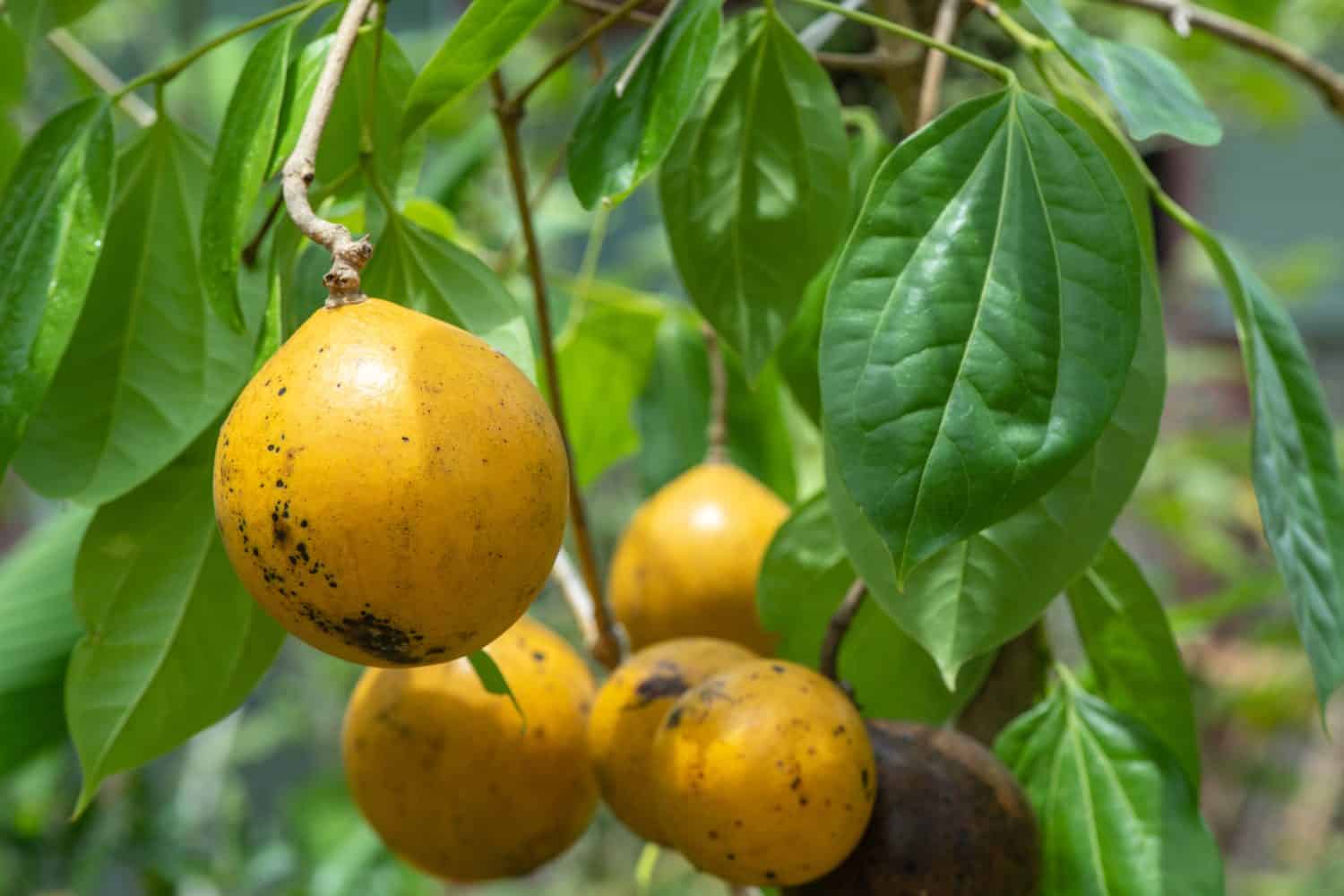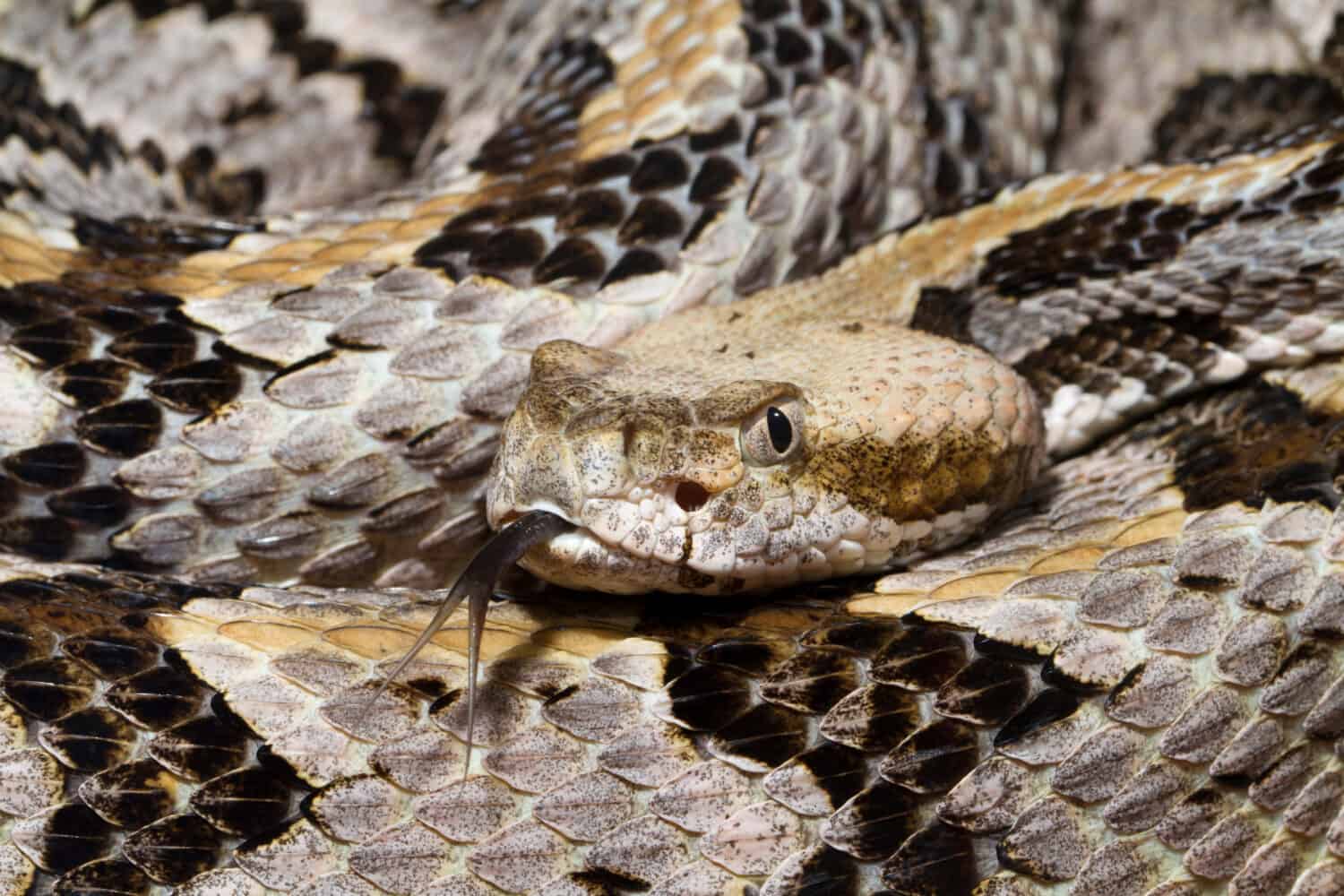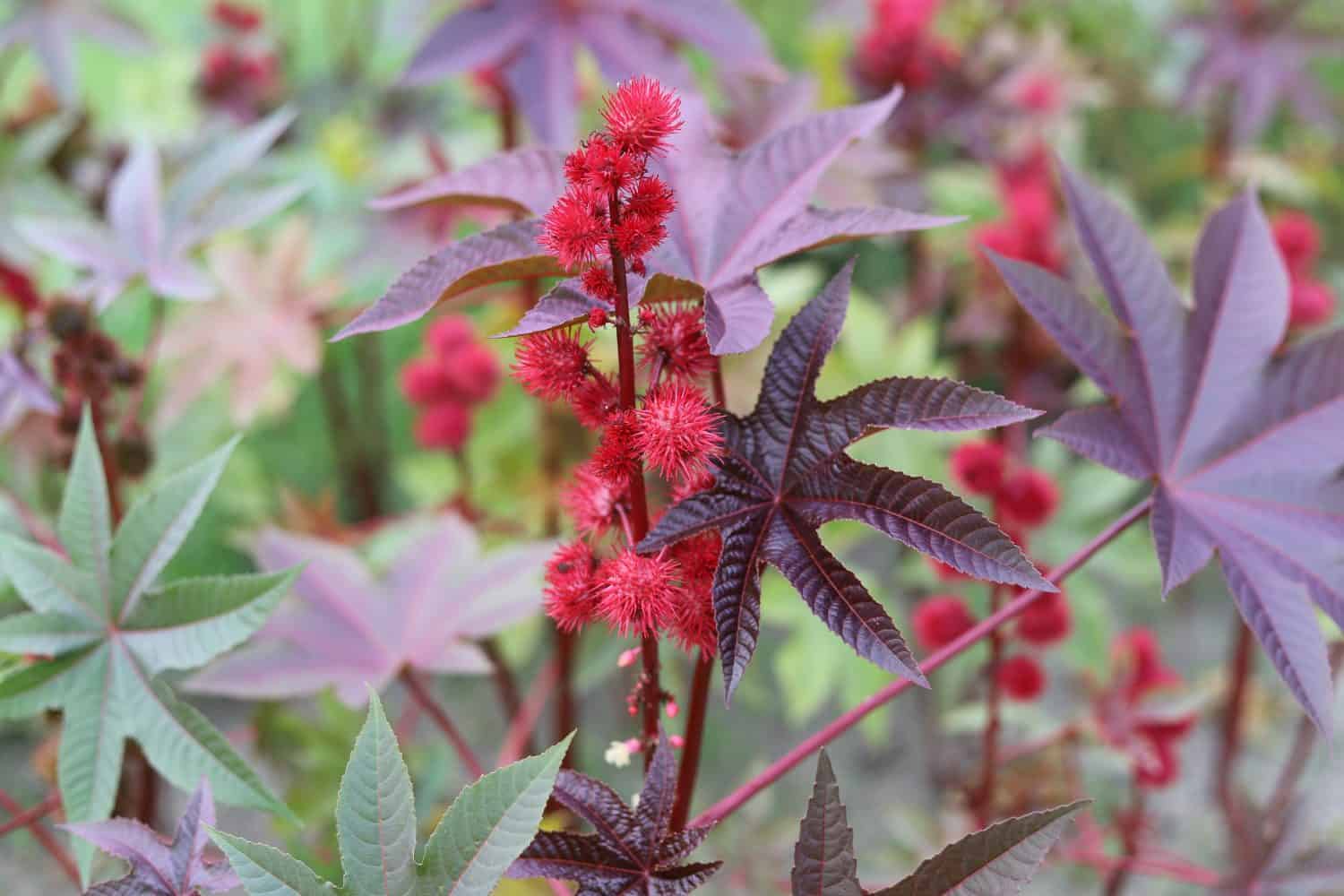A chemical is defined as a substance or compound that has been, for the most part, artificially prepared. While many chemicals are encountered throughout our day-to-day existence, and modern living wouldn’t be possible without them, some chemicals should be avoided completely. Fortunately for many, this should be an easy task. To satisfy some morbid curiosities, check out the most dangerous chemicals in the world in the list below.
10. Strychnine

Strychnine
comes from a toxin in the seeds of
Strychnos nux-vomica.
©pisitpong2017/Shutterstock.com
This chemical has a history of use in intentional poisonings; however, one can unintentionally poison oneself by overconsumption of herbal remedies containing the alkaloid toxin. While strychnine was an ingredient in many over-the-counter products up until the 1980s, it has since been outlawed. Symptoms of poisoning include skeletal muscle spasms, seizures, and vomiting. Respiratory failure can come from respiratory muscle spasms, and of course, death can also be a possibility without medical intervention.
1.5 to 2 milligrams per kilogram of body weight is a lethal dose of strychnine upon ingestion orally. Intubation and gastrointestinal decontamination are therapies that can work to prevent death from strychnine. When intervention occurs rapidly, there are often no long-lasting effects of strychnine poisoning.
9. Arsenic Trioxide

Elemental arsenic and derivatives can be extremely poisonous.
©HT Ganzo/ via Getty Images
Arsenic is an element naturally occurring in soil and different rocks or minerals. While arsenic trioxide can have therapeutic use for leukemia patients, it is also an extremely potent chemical. In history (and in the modern age) people have used arsenic or arsenic trioxide for poisoning.
Arsenic trioxide poisoning can occur through injection, inhalation, consumption, or even by absorption through the skin. Furthermore, poisoning can occur through groundwater contamination or heavy metal exposure from mining. Burning of the mouth, vomiting, digestion issues, and system failure (such as renal failure and cardiovascular collapse) are all possibilities with arsenic trioxide ingestion. Additionally, death is a possible outcome. A potentially lethal dose can be as little as 1 milligram per kilogram of body weight.
8. Potassium cyanide

Granular potassium cyanide can mix with aqueous solutions.
©Kittisak Kaewchalun/ via Getty Images
Cyanides are carbon and nitrogen bonded with the chemical formula CN. One of the most dangerous chemicals is KCN. Potassium cyanide releases hydrogen cyanide gas readily when it comes in contact with water or humidity amongst other common substances. Cyanide gas is extremely dangerous as it causes the inability of your body to use oxygen, effectively causing suffocation. It does not have an odor so detection can be difficult, if not impossible without the use of detectors.
Potassium cyanide poisoning can happen through inhalation or from contaminated food or water. Contact with the skin or eyes can lead to poisoning. Depending on the type and length of exposure, symptoms of potassium cyanide poisoning include lightheadedness, vomiting, inability to breathe, muscle spasms, and death. This can all occur within a few minutes or up to eight hours following exposure. A lethal dose delivered orally can be as little as .5 milligrams per kilogram of body weight.
7. Amatoxin

Members of the Amanita family of mushrooms contain toxins.
©iStock.com/syaber
This toxin is most characteristic of the death cap mushroom, or Amanita phalloides. Typically, consumption of this mushroom is due to mistaken identity for a safe and edible mushroom. Amatoxin inhibits protein synthesis and can lead to renal failure and death. Poisoning symptoms begin to occur between 6-24 hours of ingestion, which is too late for any stomach pumping or filtration. There is no known antidote for amatoxin poisoning, so the mortality rate is around 60% without proper medical intervention as soon as possible.
Symptoms that typically begin to show up six to 12 hours after ingestion include gastric distress, nausea, and vomiting. These symptoms are very similar to food poisoning. Liver and kidney damage begins to occur after the person starts to feel better, only to have later more serious symptoms such as kidney or liver failure. Seizures, confusion, or other neurological symptoms may also arise. Moreover, as little as .1 milligrams per kilogram of body weight can cause death, which can be just a sliver of a mushroom cap.
6. VX (Venomous Agent X)

Agent X is completely man-made and does not come from snakes.
©Mark_Kostich/Shutterstock.com
Venomous Agent X is one of five well-known series V nerve agents and is the deadliest of them all. Originally discovered while researching chemicals for pesticide use, VX became a top choice for chemical warfare.
VX varies in lethal dose depending on the route of poisoning, but on average, about six milligrams can be deadly to a human. Symptoms of VX poisoning are sweating, nausea, seizures, vomiting, and muscle spasms, with death being a possibility. Antidotes and decontamination are necessary to save someone from worsening symptoms or death depending on the dose.
5. Tetrodotoxin

While not every
pufferfish
is poisonous, some carry a dangerous chemical.
©Bk87/Shutterstock.com
Most commonly associated with pufferfish, tetrodotoxin (TTX) is a neurotoxin. This chemical works to block sodium channels in the nerve membrane, leading to paralysis and death. Many people are aware of this toxin in association with fugu, a Japanese dish of the pufferfish. People preparing this dish must go through rigorous training and have honed skills to prevent lethal poisoning from the fish. Poisonous parts might vary by species, so the chef must know exactly what they have to remove all of the poisonous parts before serving.
It’s said as little as one to two milligrams of pure TTX can be enough to kill.
4. Ricin

Fans of
Breaking Badare familiar with this deadly plant-borne chemical.
©Kabar/Shutterstock.com
Ricin is an extremely potent and dangerous chemical from the castor oil plant Ricinus communis. This glycoprotein works on the body to cause cell death by inhibiting protein synthesis, a necessary part of existence. Although castor oil is safe to use in moderate amounts, consumption of ricin is likely a death sentence. A lethal dose of ricin is around five to 10 micrograms per kilogram of weight. To put this in perspective, a 150-pound person would die from a dose of .00034 grams! That’s less than a fraction of a grain of rice, which weighs about .03 grams.
Ricin poisoning can occur through consumption, injection, or inhalation. Symptoms of ricin poisoning include difficulty breathing, nausea, fluid buildup in the lungs, and death. Symptoms might vary depending on the exposure type. Ricin poisoning can result in treatment depending on the route of poisoning and how quickly one can get adequate medical attention.
3. Batrachotoxin

This toxin is associated with poison dart frogs and Pitohui birds.
©iStock.com/reptiles4all
This toxin has no known associated treatment to it, making it extremely deadly if exposed. Batrochotoxin is a product present on the skin of the poison dart frog and the skin and feathers of Pitohui birds. Supposedly, these animals eat beetles that carry the toxin too, and secrete the toxin through their skin. Batrochotoxin is a steroid alkaloid that selectively binds to the sodium channels in the body. These sodium channels are integral to the overall function of the cells in the body.
A lethal dose is approximately two micrograms per kilogram of body weight. Symptoms of exposure include convulsions, muscle contractions, paralysis of respiratory muscles, heart failure, and of course, death.
2. Maitotoxin

Harmful
algae blooms
can deprive fish of oxygen and sunlight.
©Aleksandrkozak/Shutterstock.com
This deadly toxin comes from marine protists known as dinoflagellates. Maitotoxin is also associated with algal blooms and can be contracted by humans who eat poisoned fish, known as ciguatera fish poisoning. However, other toxins can cause this kind of poisoning, namely Ciguatoxin from where the poisoning syndrome gets its name.
Maitotoxin acts by inducing a cell-death sequence by activating calcium channels, increasing the amount of calcium ions in the cells. Symptoms of poisoning can include vomiting, diarrhea, and paralysis. Unfortunately, these symptoms can last just a few days or up to years. The lethal dose of this toxin is .17 micrograms per kilogram of body weight.
1. Botulinum toxin

Botox injections are commonly used to reduce the appearance of wrinkles.
©Robert Daly/ via Getty Images
Botulinum toxins are one of the most dangerous and toxic chemicals known to man. Botulism is a disease from spore-producing bacteria that can lead to paralysis and death. A dose of one nanogram (or even less) per kilogram of body weight is enough to kill a human. Interestingly, due to its effects on paralyzing muscles, it’s a popular cosmetic in the form of Botox. Botox injections work by selecting and injecting the toxin into the tissue to get rid of wrinkles by relaxing the muscles around them. This also prevents the muscles from moving for three to six months.
The photo featured at the top of this post is © iStock.com/reptiles4all
Thank you for reading! Have some feedback for us? Contact the AZ Animals editorial team.







